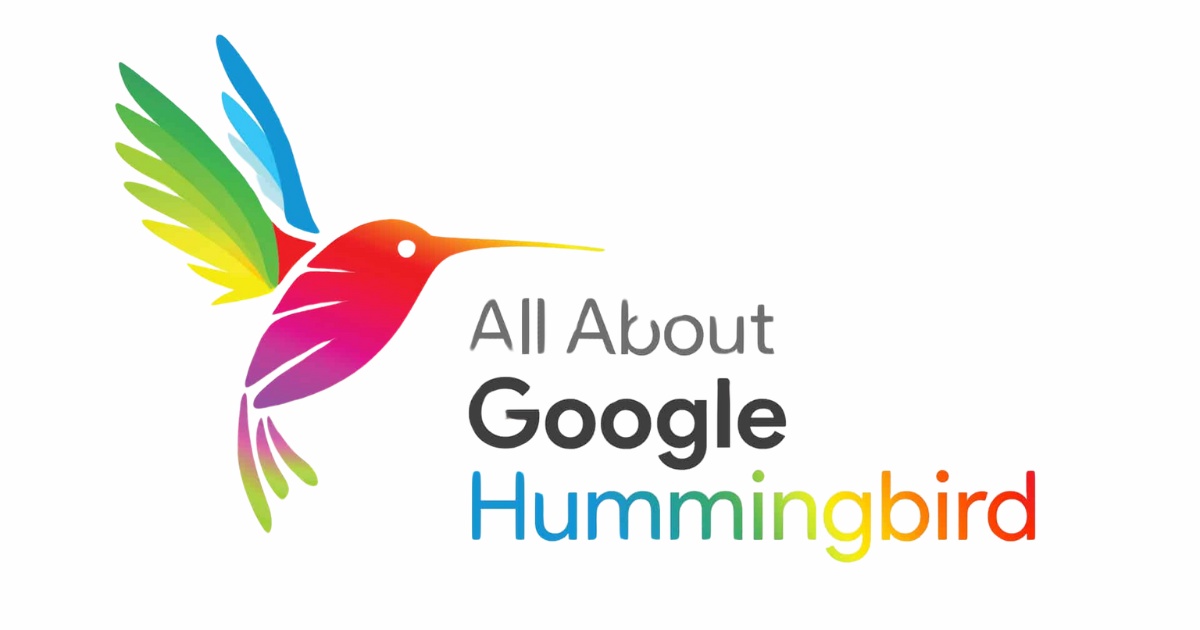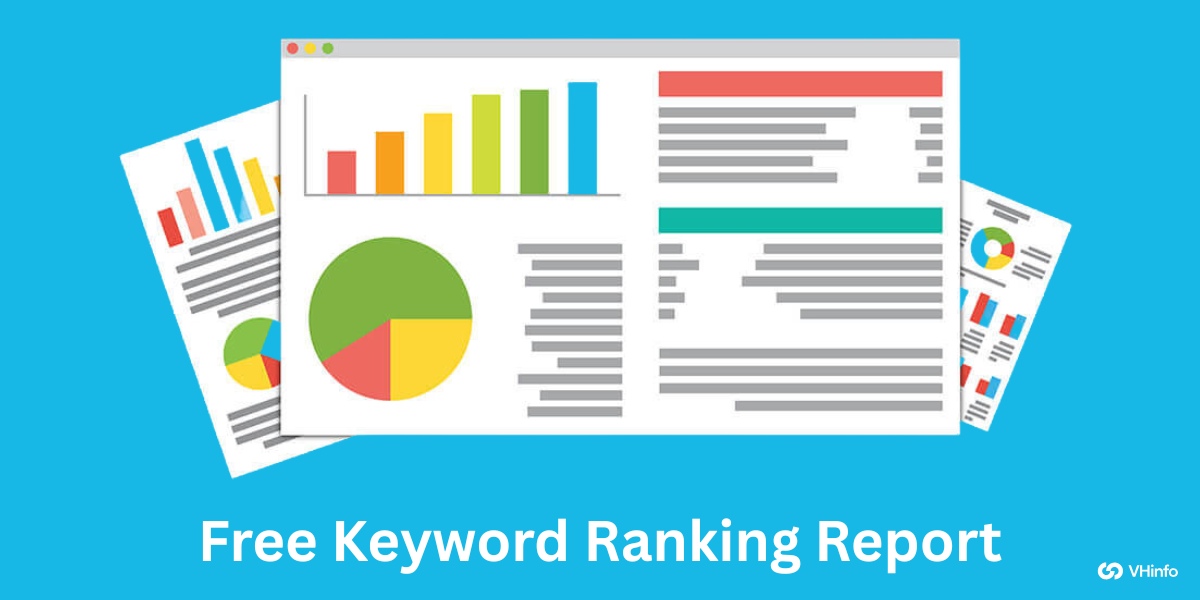In the ever-evolving landscape of search engine optimization (SEO), staying ahead requires a deep dive into how search engines like Google operate. VH Info, your trusted partner in SaaS link building, brings you unique insights into one of Google’s most impactful updates: the Hummingbird algorithm.
This comprehensive guide will unravel the intricacies of the hummingbird algorithm, its impact on search results, and provide best practices for optimizing your web content to take advantage of this new algorithm.
Is Google Hummingbird An Algorithm?

Yes, the hummingbird algorithm is a significant update to Google’s core algorithm. It represents a rewrite of the core search algorithm, designed to enhance how Google processes and understands search queries.
VH Info understands the importance of staying updated with these algorithm updates to maintain and improve organic traffic.
What Is The Google Hummingbird Algorithm?

The hummingbird algorithm is a search algorithm implemented by Google in 2013. It was a major step toward improving the precision and relevance of search results.
Unlike its predecessors, which primarily focused on individual keywords, hummingbird aimed to understand the user intent behind search queries using natural language processing.
VH Info recognizes that the hummingbird update marked a shift from simple keyword matching to a more profound comprehension of what users are genuinely seeking.
Why is it Called Hummingbird?
The name “Hummingbird” reflects the algorithm’s speed and precision. Just as a hummingbird can swiftly and accurately navigate to extract nectar from flowers, Google’s hummingbird algorithm swiftly and accurately delivers relevant results.
VH Info emphasizes that this name highlights Google’s goal to provide a faster and more efficient search experience.
When Was The Hummingbird Algorithm Launched?
The hummingbird algorithm was officially launched on September 26, 2013, coinciding with Google’s 15th-anniversary event.
VH Info notes that this launch marked a pivotal moment in the evolution of Google’s search algorithm, setting the stage for future advancements in search technology.
How Does The Hummingbird Algorithm Work?

The hummingbird algorithm works by employing semantic search to interpret the context of search queries. Semantic search enables Google to understand the relationships between words and the intent behind the query, rather than merely matching individual keywords.
VH Info highlights that this approach allows Google to deliver more relevant content that directly addresses the user’s needs.
The Role of Semantic Search in Hummingbird
Semantic search is at the core of the hummingbird algorithm. It uses natural language processing (NLP) to analyze the structure and semantics of search queries, considering synonyms, context, and user intent.
This enables the search engine to provide more accurate results, especially for complex, conversational queries. VH Info understands that embracing semantic search is essential for optimizing web content to align with google’s hummingbird.
Understanding Knowledge Graph and Hummingbird
The knowledge graph is Google’s database of interconnected information about people, places, and things. Hummingbird integrates with the knowledge graph to understand the relationships between entities and provide contextually relevant results.
VH Info explains that the knowledge graph acts as Google’s database, while the hummingbird algorithm is the brain making sense of it.
Why Is Google Hummingbird Important?

Google’s hummingbird update is important because it significantly improved the user experience (UX) by delivering more accurate and relevant results.
VH Info believes that this new algorithm was a major step toward making the search engine results more useful and attuned to user intent.
Embracing Semantic Search
The hummingbird algorithm emphasized the importance of semantic search, which allows search engines to understand the meaning and context behind search queries rather than just matching keywords.
This shift enables Google to provide more relevant information and valuable information to users, improving their search experience.
VH Info encourages content creators to focus on creating content that aligns with semantic search principles to enhance their visibility in search results.
Paving The Way For Mobile and Voice Searches
Hummingbird played an important role in paving the way for mobile search and voice search.
By understanding natural language queries, Google could provide better answers for conversational queries made on mobile devices and through voice assistants like Google Assistant.
VH Info highlights that optimizing for mobile search and voice search is essential for reaching a broader audience.
Enhancing The Knowledge Graph
The hummingbird update enhances the knowledge graph by integrating it more deeply into the search process. This integration allows Google to provide more contextually relevant results based on the relationships between different entities.
VH Info notes that using the knowledge graph can significantly improve the accuracy and relevance of search results.
Google Hummingbird and SEO

The hummingbird algorithm significantly reshaped search engine optimization (SEO) strategies by emphasizing the importance of high-quality content, user intent, and semantic search.
VH Info understands that SEO experts had to rethink their approaches and prioritize creating relevant content that addresses user needs.
Here’s how the hummingbird update impacted SEO and how to adapt:
Diversify The Length of Your Content
It’s important to diversify the length of your content to cater to different search queries. Create both short, concise answers for quick information and long-form, in-depth content for detailed explorations of topics.
VH Info recommends that this strategy ensures your web content meets a wide array of user needs, boosting relevance in google search.
Longer content can include a wider variety of keywords, including long-tail phrases, cover a topic more comprehensively, improve user engagement by reducing bounce rates, attract more backlinks, and improve E-A-T (Expertise, Authoritativeness, and Trustworthiness).
Produce Visual Content
Visual content, such as images, videos, and infographics, can enhance the user experience (UX) and engagement. The hummingbird algorithm recognizes the value of visual elements in delivering relevant information and improving content quality.
VH Info advises including high-quality visuals to make your content more appealing and shareable. Engaging visuals encourages visitors to stay on your website longer, breaking up written content and keeping them exploring for longer.
Use Topic-Appropriate Language
Using topic-appropriate language is important for aligning your content with the hummingbird algorithm. Employ synonyms, related terms, and variations of your target keywords to capture a wider range of search intent.
VH Info emphasizes that this approach helps Google better understand the context of your content and improves its relevance to user queries. Topic relevance ensures that your website is interesting and useful to users, which results in a lower bounce rate.
Implement Schema Microdata
Implementing schema markup helps search engines like Google understand the meaning and context of your content. Schema markup provides structured data that enables Google to display more relevant results in search results, such as rich snippets.
VH Info recommends using schema markup to enhance your content’s visibility and click-through rates in the search engine results.
Websites with schema markup can rank higher and experience increased organic traffic. You can use schema markup for articles, products, reviews, FAQs, and local businesses.
How Did Google Hummingbird Impact SEO?

The hummingbird algorithm had a profound impact on search engine optimization (SEO), shifting the focus from keyword density to content quality and relevance.
VH Info highlights that this new algorithm forced website owners to prioritize creating relevant content that genuinely answers user queries.
Emphasis On High-Quality Content
With the introduction of Hummingbird, the emphasis on high-quality content became more pronounced. Websites now had to provide relevant content that genuinely answered user queries.
VH Info notes that the hummingbird update underscored the importance of relevant content being closely related to what users were searching for, increasing the need for effective content marketing.
Importance Of Optimizing For Long-Tail Keywords
The hummingbird algorithm made optimizing for long-tail keywords vital for SEO success. These longer, more specific phrases often reflect how people naturally speak or type queries.
VH Info advises that targeting long-tail keywords can help capture traffic from users with clear search goals and improve your site’s visibility.
Local Search Improvements
Hummingbird brought about improvements in local search results, making them more accurate and relevant. The algorithm’s enhanced understanding of user intent allowed it to deliver location-specific results based on context.
VH Info highlights that optimizing for local SEO is essential for businesses targeting local customers.
More Relevant Results For Searches With Local Intent
The hummingbird algorithm improved the relevance of search results with local intent by understanding the context of search queries. This meant that searches for local businesses and services became more accurate and tailored to the user’s location.
VH Info emphasizes that optimizing for local search is important for businesses looking to attract local customers.
What Are The Benefits Of The Hummingbird Algorithm?

The benefits of the hummingbird algorithm include improved accuracy, relevance, and a better user experience (UX).
By understanding user intent and the context of search queries, Google can deliver more precise answers and relevant results, enhancing user satisfaction.
VH Info notes that these benefits contribute to a more efficient and user-friendly search engine. This new algorithm also helps Google handle complex, conversational queries more effectively, especially those made through voice search.
The enhanced understanding of natural language queries allows for more accurate and valuable information to be provided, making the google search experience more intuitive and rewarding.
Ultimately, the goal is to provide search engine results that truly meet the user’s needs.
How Can I Optimize Content For The Hummingbird Algorithm?

To optimize content for the hummingbird algorithm, focus on creating high-quality, in-depth content that addresses user intent and utilizes semantic search principles. Use natural language and include long-tail keywords to match how people search.
VH Info recommends implementing schema markup to help Google understand the context of your content. Also, ensure your web content is mobile-friendly and loads quickly for mobile search.
Building quality backlinks from relevant and authoritative websites will further enhance your site’s visibility.
By prioritizing user experience (UX) and providing valuable information, you can align your web content with the hummingbird algorithm and improve your search engine rankings.
How Does The Hummingbird Update Affect The Way Google Ranks Search Results?

The Hummingbird update affects how Google ranks search results by prioritizing relevant content that matches user intent over keyword density. Websites with relevant information that genuinely answer user queries tend to rank higher, as the algorithm understands the context of search queries better.
VH Info highlights that this shift necessitates a focus on creating user-centric content and semantic search strategies.
The algorithm favors web content that provides valuable information and a positive user experience, rather than relying on keyword stuffing or other manipulative techniques.
As a result, websites that focus on delivering relevant content and satisfying user intent are more likely to succeed in achieving higher search engine rankings.
How Did Hummingbird Improve Over Previous Algorithms Like Panda and Penguin?

Hummingbird improved over previous algorithms like Panda and Penguin by focusing on semantic search and understanding user intent, rather than just penalizing websites for keyword stuffing or low-quality content.
VH Info explains that this new algorithm allowed Google to deliver more relevant results by considering the context of search queries and utilizing natural language processing (NLP).
Unlike Panda, which targeted low-quality or thin content, and Penguin, which penalized sites for link schemes and keyword stuffing, hummingbird aimed to understand the meaning behind search queries to provide more accurate and useful results.
This overhaul of Google’s algorithm represented a major step toward a more sophisticated and user-friendly search experience.
Adapting To The Hummingbird Era: SEO Best Practices

Adapting to the hummingbird era requires a shift in search engine optimization (SEO) strategies towards creating content that aligns with user intent and semantic search principles.
VH Info recommends the following SEO best practices to thrive in the hummingbird era:
- High-Quality, Comprehensive Content: Creating high-quality, comprehensive content that thoroughly covers a topic and addresses various related questions is important. VH Info advises focusing on providing valuable information and unique insights that satisfy user intent. This means going beyond simple keyword density and focusing on creating relevant content that truly helps users. By delivering unique insights, you establish expertise, authoritativeness, and trustworthiness (E-A-T).
- Long-Tail Keyword Optimization: Optimizing for long-tail keywords helps capture traffic from users with specific search goals. VH Info suggests that including longer, more specific phrases in your web content can improve relevance and visibility. Long-tail keywords often reflect natural language queries, making your web content more aligned with how people actually search. Targeting these keywords can increase organic traffic by attracting visitors who know what they are looking for and what they expect to find when they arrive at your site.
- Mobile Optimization: Ensuring your website is mobile-friendly and loads quickly is essential, as mobile search and voice search continue to rise in popularity. VH Info emphasizes that mobile optimization is a critical factor for ranking well in Google’s search algorithm. With more users accessing the internet on mobile devices, Google prioritizes websites that provide a seamless mobile experience.
- Contextual and Semantically Relevant Content: Creating content that is contextual and semantically relevant to user queries improves your chances of ranking higher. VH Info recommends using natural language and including related terms to enhance the relevance of your web content. Focus on using semantic search principles to help Google understand the meaning behind your web content and how it relates to user intent.
- Local SEO Strategies: Implementing local SEO strategies, such as optimizing for local keywords and listing your business on local directories, can boost your visibility in local search results. VH Info highlights that local SEO is essential for businesses targeting local customers. Focusing on local search helps ensure your business appears in relevant results when users search for nearby services or products. This includes optimizing your Google business profile, getting local backlinks, and encouraging local reviews.
The Future Of Google Hummingbird

The future of Google’s hummingbird algorithm involves continuous advancements and integrations to provide even more relevant and intuitive search results. VH Info anticipates that Google’s search algorithm will continue to evolve to meet the changing needs of users and the evolving digital landscape.
Here’s a closer look at what the future holds:
Natural Language Processing and Artificial Intelligence
Advancements in natural language processing (NLP) and artificial intelligence (AI) will play a significant role in the evolution of the hummingbird algorithm.
These technologies will enable Google to better understand the nuances of human language and provide more accurate results, particularly for complex or conversational queries.
VH Info notes that staying updated with these advancements is important for SEO success, as Google’s search algorithm becomes more sophisticated.
Consumer Adoption Of Voice Recognition Technology
The increasing consumer adoption of voice recognition technology will further shape the future of the hummingbird algorithm.
As more users rely on voice search, Google will continue to refine its ability to understand and respond to natural language queries and conversational searches.
VH Info emphasizes that optimizing for voice search is essential for reaching a wider audience and staying competitive in search engine results.
Going Beyond Semantic Search With The ‘Internet Of Things’
The ‘Internet of Things’ (IoT) presents new opportunities for Google to enhance the hummingbird algorithm beyond semantic search.
By integrating data from various devices and sources, Google can provide more personalized and contextually relevant results.
VH Info anticipates that the IoT will play a significant role in the future of Google’s search algorithm, enabling a more connected and intelligent search experience.
This could mean search engine results that are tailored to a user’s specific location, activities, and preferences, drawing on data from smart devices, wearable technology, and other IoT devices.
FAQ’s:
What Is An Example Of A Google Hummingbird?
An example of Google’s hummingbird algorithm in action is when a user searches for “What’s the best Italian restaurant near me that’s open now?“
Instead of just looking for those individual keywords, google’s hummingbird understands the user intent, considers your current location, and provides relevant results for nearby Italian restaurants that are currently open.
Does Keyword Research Still Matter With Hummingbird?
Yes, keyword research still matters with hummingbird, but the focus has shifted from keyword density to keyword relevance and user intent.
VH Info advises that conducting keyword research to identify the terms and phrases your audience uses is still essential, but it’s equally important to create relevant content that satisfies their intent and provides valuable information.
Does Heading Structure Still Matter For SEO After The Hummingbird Update?
Yes, heading structure still matters for SEO after the hummingbird update. Using clear and concise headings (H1, H2, H3, etc.) helps Google understand the structure and content of your pages.
This makes it easier to rank your web content for relevant search queries because it helps the search engine understand what each section of your web content is about. VH Info recommends using headings to organize your content logically and improve its readability.
How Can I Tell If My Site Is Affected By Hummingbird?
You can tell if your site is affected by Hummingbird by monitoring your search engine rankings and organic traffic.
A significant drop in rankings or organic traffic after the hummingbird update could indicate that your website is not aligned with the algorithm’s emphasis on high-quality content and user intent.
VH Info suggests using analytics tools to track these metrics and identify potential issues, so you can make the necessary adjustments.
What Is Semantic Search, And How Does Hummingbird Relate To It?
Semantic search is a search technique that focuses on understanding the meaning and context behind search queries, rather than just matching keywords.
The hummingbird algorithm heavily relies on semantic search to provide more accurate and relevant results. VH Info explains that Hummingbird utilizes semantic search and natural language processing (NLP) to interpret user intent and deliver valuable information.
How Does The Hummingbird Algorithm Handle Longer, More Conversational Search Queries?
The hummingbird algorithm handles longer, more conversational search queries by using natural language processing (NLP) to understand the context and intent behind the query.
This allows Google to provide more accurate and relevant results, even when the search query is phrased as a question or request. VH Info highlights that hummingbird’s ability to process natural language queries makes it well-suited for voice search and mobile search.
Conclusion
In conclusion, the hummingbird algorithm signifies a major shift in how Google understands and ranks web content.
By focusing on semantic search and user intent, google’s search algorithm now prioritizes relevant content that provides valuable information over simple keyword density.
As VH Info has shown, adapting to this new algorithm requires a focus on creating high-quality, comprehensive content that uses natural language and targets long-tail keywords. Optimizing for mobile search and implementing local SEO strategies are also important for success.
Staying informed about algorithm updates and focusing on providing a positive user experience will help ensure your web content aligns with Google’s Hummingbird and achieves higher search engine rankings.
Embracing these SEO best practices is essential for thriving in the ever-evolving landscape of search engine optimization and content marketing.


